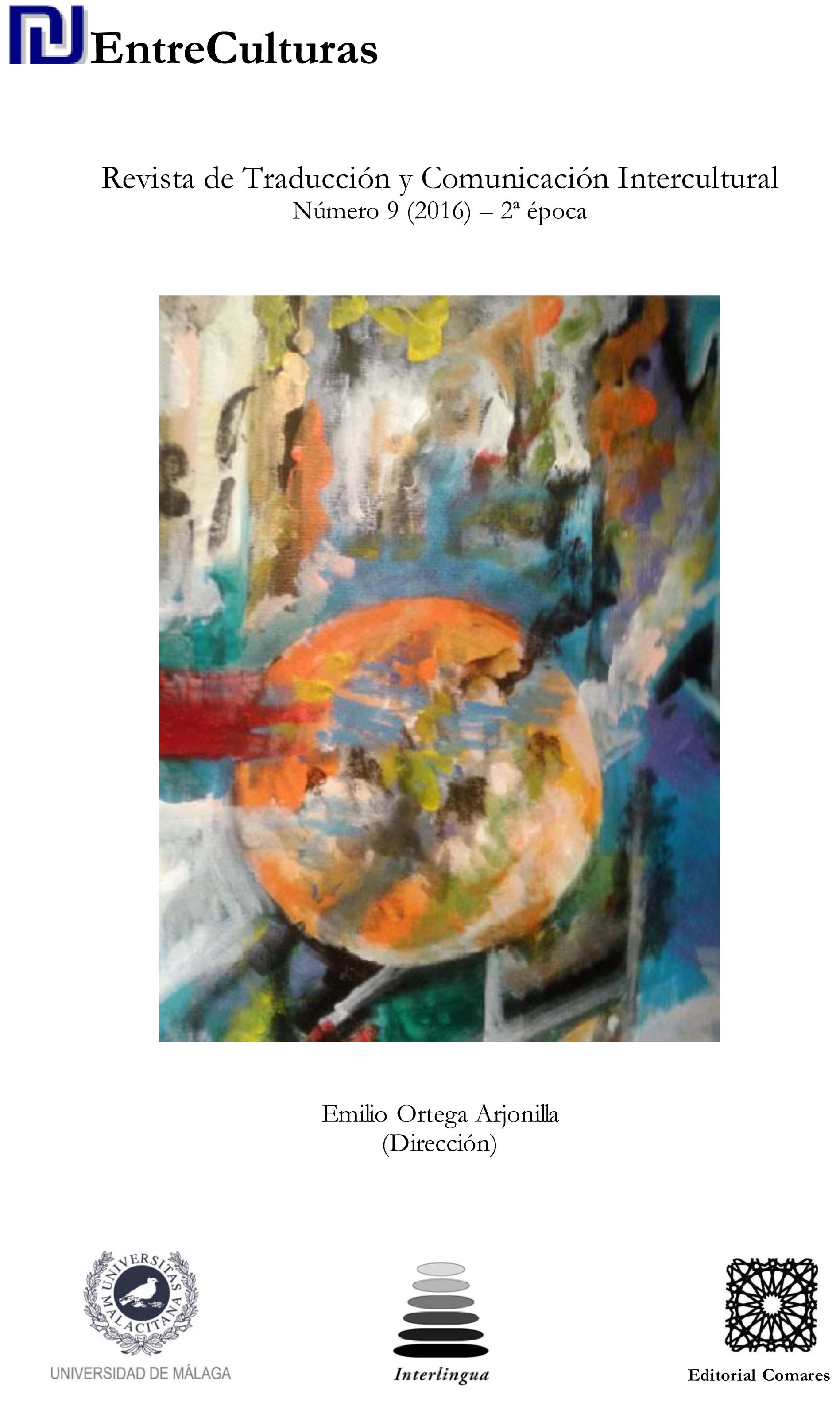THE RELIABILITY AND LIMITATIONS OF GOOGLE TRANSLATE: A BILINGUAL, BIDIRECTIONAL AND GENRE-BASED EVALUATION
DOI:
https://doi.org/10.24310/Entreculturasertci.vi9.11240Keywords:
Machine translation, Google Translate, Reliability, Corpus, Linguistic limitationsAbstract
The popularity of machine translation systems (or CAT, computer-assisted translation), which enable their users to obtain automatically generated translations of any text, has been increasing ever since they were created. One of the most widely used machine translation is Google Translate, a statistical system whose performance is the object of study of this paper. In order to evaluate its reliability, a small-scale study has been carried out in which translations of tourist texts and football match reports published online generated by the tool have been analysed, and the most representative mistakes found in terms of frequency have been classified at a lexicogrammatical, syntactic, pragmatic and punctuation level. Based on these findings, the main linguistic limitations of Google Translate have been established. It is worth highlighting the fact that three crucial variables have intervened in the corpus compilation, namely language (English/Spanish), direction of the translation (English into Spanish and vice versa) and genre of the texts (tourist and sports).
Downloads
Metrics
References
Bhatia, Vijay Kumar (1993). Analysing genre: Language use in professional settings. London, Longman.
Herrera, J. [online] (n.d.). “Documentación aplicada a la traducción: Hay vida más allá de Google”. La linterna del traductor, 9. http://www.lalinternadeltraductor.org/n9/documentacion-traduccion.html [retrieved April 20, 2016].
López Guix, J. G. y J. M. Wilkinson (1997). Manual de traducción inglés-castellano: Teoría y práctica. Barcelona, Gedisa.
Martínez Moreno, R. [online] (2013). “Breve análisis del lenguaje periodístico deportivo en España”, Papel de periódico. http://papeldeperiodico.com/2013/09/breve-analisis-del-lenguaje-periodistico-deportivo-en-espana/ [retrieved May 7, 2016].
McLuhan, Marshall (1962). The Gutenberg galaxy: The making of typographic man. Toronto, University of Toronto Press.
Safaba Translation Solutions [online] (n.d.). “What are the main types of machine translation?”, A quick guide to machine translation. http://www.machinetranslation.net/quick-guide-to-machine-translation/machine-translation-technologies [retrieved May 5, 2016].
Sanning, H. (2010). “Lost and found in translating tourist texts: Domesticating, foreignising or neutralising approach”, JoSTrans: The Journal of Specialised Translation, 13, 124-137.
Skibitska, O. [online] (2013). “The challenges of translation of tourist e-text”, Translation Journal, 17 (4). http://translationjournal.net/journal/66tourism.htm [retrieved March 5, 2016].
Swales, John Malcolm (1990): Genre analysis: English in academic and research settings. Cambridge, Cambridge University Press.
Turovsky, B. [online] (2016). “Ten years of Google Translate”, Google Translate blog. http://googletranslate.blogspot.com.es/ [retrieved April 20, 2016].
Valero Garcés, C. [online] (2012). “Inglés y español mano a mano: Dos lenguas y dos formas de ver el mundo”, Cuadernos Cervantes. http://www.cuadernoscervantes.com/lc_ingles.html [retrieved May 20, 2016].
Zaro, J. J. y M. Truman (1999). Manual de traducción: Textos españoles e ingleses traducidos y comentados. Madrid, Sgel.
Downloads
Published
How to Cite
Issue
Section
License
Copyright (c) 2017 Blanca Roig Allué

This work is licensed under a Creative Commons Attribution-NonCommercial-ShareAlike 4.0 International License.
All contents published in Entre culturas. Revista de traducción y comunicación intercultural are protected under the Creative Commons Attribution-NonCommercial-ShareAlike 4.0 International (CC BY-NC-SA 4.0) license. All about this license is available in the following link: <http://creativecommons.org/licenses/by-nc-sa/4.0>
Users can copy, use, redistribute, share and exhibit publicly as long as:
- The original source and authorship of the material are cited (Journal, Publisher and URL of the work).
- It is not used for comercial purposes.
- The existence of the license and its especifications are mentioned.
There are two sets of authors’ rights: moral and property rights. Moral rights are perpetual prerogatives, unrenounceable, not-transferable, unalienable, imprescriptible and inembargable. According to authors’ rights legislation, Entreculturas. Revista de traducción y comunicación intercultural recognizes and respects authors moral rights, as well as the ownership of property rights, which will be transferred to University of Malaga in open access. The property rights are referred to the benefits that are gained by the use or the dissemination of works. Entreculturas. Revista de traducción y comunicación intercultural is published in an open access form and it is exclusively licenced by any means for doing or authorising distribution, dissemination, reproduction, , adaptation, translation or arrangement of works.
Authors are responsable for obtaining the necessary permission to use copyrighted images.





7.png)
